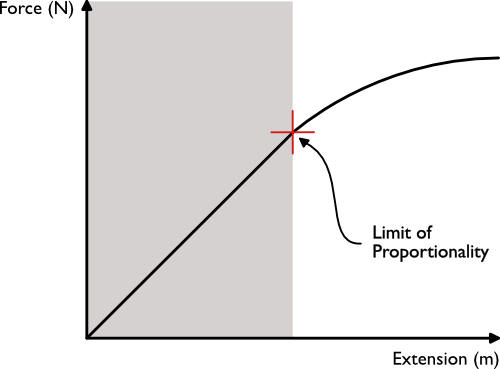Hooke's Law¶
Hooke's Law states that when an elastic object is compressed or stretched, the force required to extend the object is proportional to the change in length (extension) - up to a limited extension, the limit of proportionality.
The constant of proportionality in this case is the Spring Constant, which is specific to the spring.
Equation¶
Where:
- F is force, in Newtons (N)
- k is spring constant, in Newtons per metre (Nm^{-1})
- e is change in length, in metres (m)
Types of deformation¶
There are two types of deformation that can occur when compressing or stretching an elastic object:
- Elastic deformation: the object will return to its original size and length.
- Inelastic (plastic) deformation: the object will have a permanent change in size and length.
Elastic Limit¶
The Elastic Limit of an elastic object is the maximum force it can take before the deformation becomes inelastic.
Calculating the Spring Constant¶
The Spring Constant can be calculated by plotting a Force-Extension graph, and measuring the gradient up to the limit of proportionality (the point of which the force required is no longer linearly increasing with extension).

Except as otherwise noted, the content of this page is licensed under the Creative Commons Attribution 4.0 License, and code samples are licensed under the Mozilla Public License 2.0.